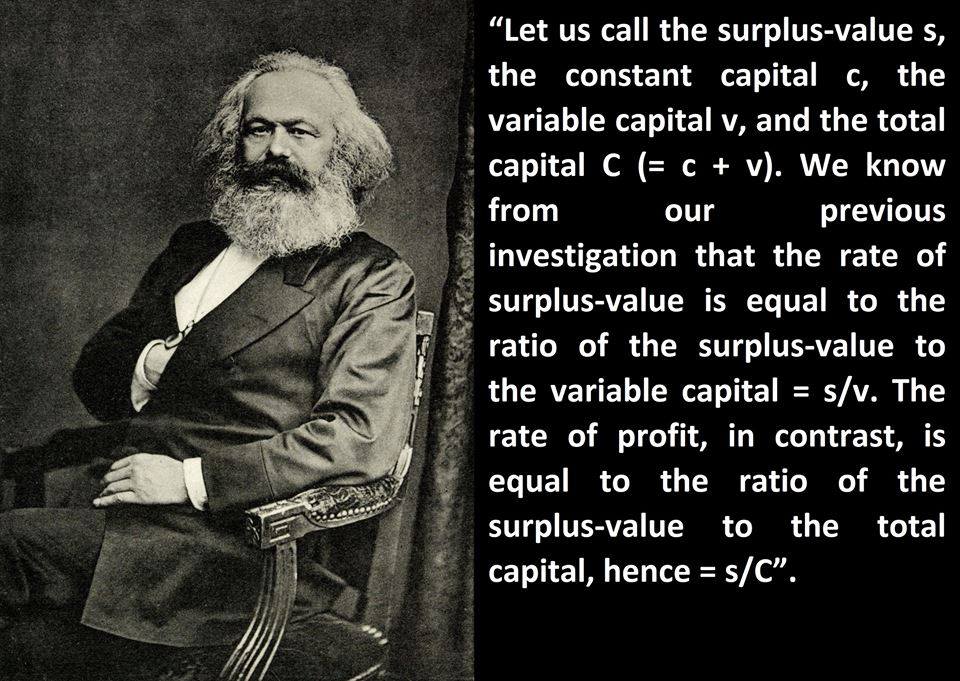“From the point of view of its material, the profit (in the shape in which it directly confronts us here) is nothing other than the surplus-value itself. Its absolute magnitude does not therefore differ from the absolute magnitude of the surplus-value which capital produces during a given turnover time. It is surplus-value itself, but calculated differently, or, as it initially appears, viewed subjectively in a different way.
Profit, in a material sense, and therefore as an absolute magnitude or quantity, is not at all different from surplus-value. It is nevertheless a changed form of the latter, and we shall therefore investigate the significance and importance of this simple alteration of form immediately after the present discussion. In contrast to this, in the rate of profit – or its relative magnitude, i.e., its magnitude as compared with the magnitude of the capital advanced – the surplus-value receives not only a new conceptual expression but also a new numerical expression, which differs from its original shape. The profit is the same as the surplus value in terms of its magnitude, but the rate of profit is from the outset of a different magnitude from the rate of surplus-value. The numerical expression of the same magnitude, e.g., the £100 of surplus-value in the above example, naturally changes according to whether it is expressed in proportion to a smaller or a larger number; whether 100 is measured against 100 or 100 against 500. It amounts to 100 percent in relation to 100 and only 20 percent in relation to 500.
Let us call the surplus-value s, the constant capital c, the variable capital v, and the total capital C (= c + v). We know from our previous investigation that the rate of surplus-value is equal to the ratio of the surplus-value to the variable capital = s/v. The rate of profit, in contrast, is equal to the ratio of the surplus-value to the total capital, hence = s/C, in other words = s/(v + c)”.
Manuscritos de 1864-5 (The transformation of surplus-value into profit)
